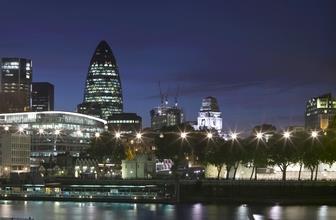News analysis: Siemens issues study which examines future solutions to tackle the buildings, energy, transport waste and water needs for the capital
There’s no need for the further appliance of science. Logical steps to incorporate available technologies into our lifestyles would allow London to meet, and even exceed, its future carbon emission targets.
The findings, which came from a report published on Monday by Siemens, analyse the costs and potentials of increasing the sustainability of mega cities. The report is at pains to point out that individuals and business should take responsibility for their actions, and far from making selfless sacrifices for future generations, they would immediately feel the benefits resulting in a win-win situation.
Speaking on the Today show on Radio 4 on Monday Siemens UK chairman Alan Wood pointed to the need for individuals as well as companies and the Government to make changes to reduce emissions. “There are a lot of solutions out there that are already available for people to use such as home insulation and low energy light bulbs.” Asked why people had not taken up such measures he replied: “It’s lethargy. There is no driving necessity for them to do it, no burning platform. It’s not frightening people today.”
Positive ideas
Far from frightening, the report is packed with positive ideas relating to transport, buildings, energy, water and waste management, and proposes that a number of simple steps would have a massive impact. Insulation of buildings is cited as the biggest possible lever for CO2 reduction, with potential reduction in the carbon output by 10%, with the added benefit of €150m saved per year.
The study, which provides the first comprehensive ecological cost-benefit analysis of city living, focuses on London as a case study for cities worldwide. Despite the economies of scale that should be available to cities, it is found that the 50% of the world’s population who inhabit cities are responsible for 80% of carbon emissions.
Cost efficient solutions
There are a lot of solutions out there that are already available for people to use such as home insulation and low energy light bulbs
Alan Wood, Siemens UK chairman
As many of the recommendations rely on more efficient use of resources, Siemens have calculated that almost 70% of schemes would provide net savings of more than €1.8bn per year by 2025 to the investors. For the remaining 30%, the report advises against expensive, “fashionable solutions”. Some solutions offset taxes such as emissions and landfill tax: the report surmises that 90% of the carbon abatement, for which the technology already exists, will pay back over relevant time. Alan Wood again: "A lot of the measures that we could take to cut down our carbon footprint in London would save us money.” One of the most cost efficient solutions is the low energy light bulb. If London households which have not made the switch do it now, in addition to the well-publicised savings for bill payers, it will result in preventing the release of 400,000 metric tonnes of carbon by 2025.
According to the authors, if we follow all the schemes in the report the financial outlay would be minimal, costing “less than €300 per inhabitant per year, around half of the average Londoner’s annual bill for gas and electricity.” It adds up though: until 2025, an incremental total investment of around €41 billion would be needed to implement all the identified technologies to reduce carbon emissions.” However, on further examination this is not such an unreasonable price tag for environmental improvement both on a local and a global scale, it’s less than one percent of London’s total economic output.
The government won’t have to empty their coffers either. Neither local nor national government was held responsible for implementing improvements, their role is in promoting the techniques already available, for example, encouraging investors into energy generation.
Benefits for investors
The report suggested various solutions for decentralizing from the National Grid saying: “Gas-powered CHP is currently the most promising decentralized energy technology for London, its utility depends on the carbon intensity of the alternatives available.” Promising financial benefits await the investors, but the report admits a significant problem, which will encountered by mega cities around the world: the city has very few suitable sites for installing the technology.
London was chosen because of its median performance in matters of sustainability, but also because of its willingness to lead on environmental issues. The report is based on well-known technology, the recommendations are very specific. A similarly detailed investigation might be necessary for each of the world’s mega cities to help lift the fog of ignorance. But it also requires people to help themselves, after all a report can only suggest changes, it’s people who have to act on those suggestions.
Source
�ڶ����� Sustainable Design


















No comments yet